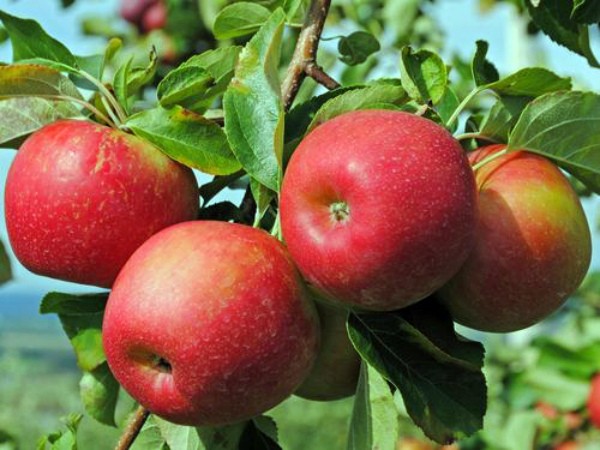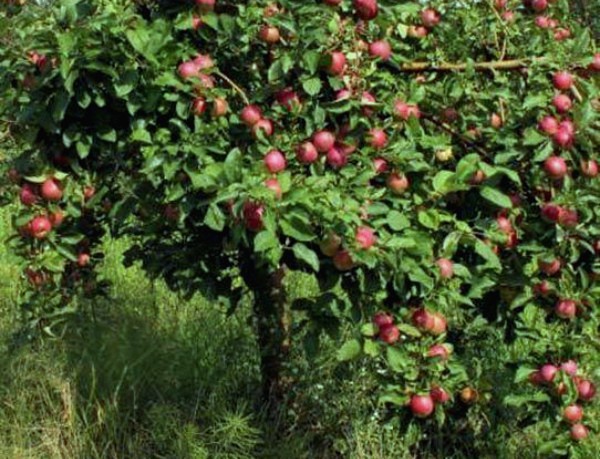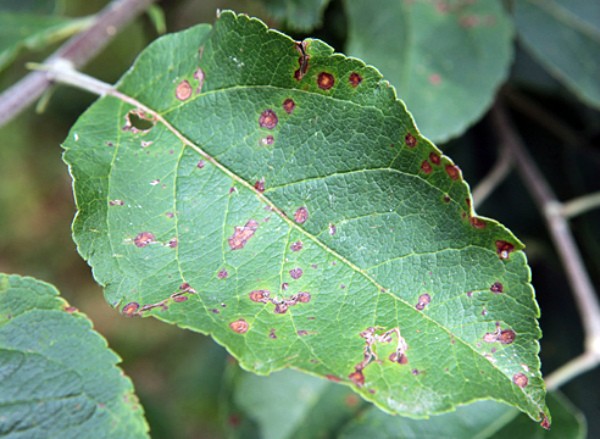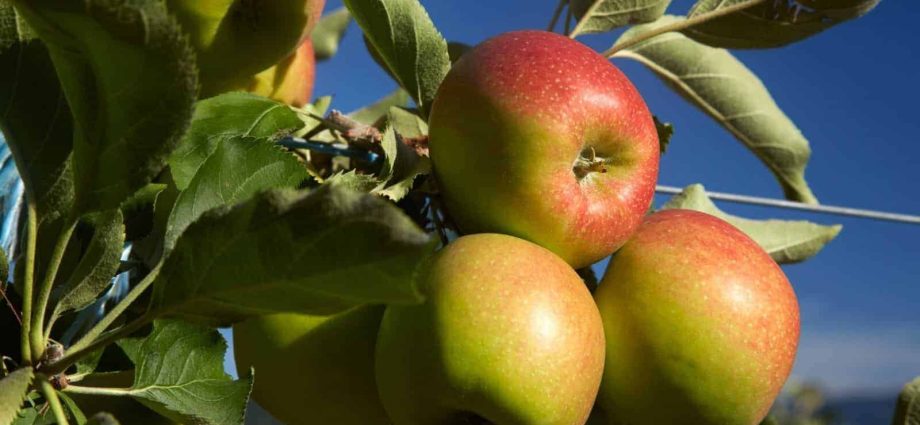Contents
Sometimes you do not need to be an experienced gardener to accurately recognize what kind of apple is in front of your eyes. Simply because the popularity of some varieties goes off scale due to high consumer qualities. The topic of this article is an apple tree variety that is extremely drought tolerant and unpretentious in cultivation – Jonagold, as well as its best clones.
Historical information
For the first time, the Jonagold variety appeared back in 1943 and was bred by breeders from New York after the successful crossing of the Jonathan and Golden Delicious varieties. In 1960, the variety moved to Europe, finding a new home in the gardens of Belgium and the Netherlands, since the Americans did not see much benefit in the development and cultivation of Jonagold. Large-scale production studies of the apple tree began in the 70-80s of the last century in the forest-steppe and steppe of Ukraine. Actually, it was on the territory of the former USSR that the variety revealed its potential and became one of the most popular fruit species.

Description and characteristics of the variety
The description should start with how the tree will look in the garden most of the time. The apple tree is vigorous, decorated with a wide oval crown, while the tree is young, and later becomes spherical. Skeletal branches are at a wide angle with respect to the trunk. The variety bears fruit on fruit twigs, kolchatka, as well as one-year growth.
The fruits are quite large (average size is about 180-200 g), slightly conical, one-dimensional. Ribbiness near the calyx is noted, especially noticeable in large apples. The peel is of medium thickness, dense and smooth with a pronounced waxy coating. The main color of the fruit is green-yellow, the integumentary color is orange-red “blush”. The pulp is yellow, dense and juicy, sweet and sour with a distinct astringency. Ripeness comes in mid-September.
The variety is distinguished by its versatility of use and high keeping quality: apples retain their taste in storage until February, and in the refrigerator until mid-April.
The first fruits of the apple tree are brought in the third year after planting. During the pollination period, they interact well with the varieties “Idared”, “Gloucester”, “Jonathan”, “Champion”. The variety does not have good winter hardiness and has low immunity to powdery mildew. But against scab it is quite stable.

Since the Jonagold variety is very popular all over the world, numerous clones have appeared (there are more than 100 species in total), which, as a rule, have a more intense color. Conventionally, they are divided into 5 groups by color:
- Bright red skin, with a spotty, somewhat blurred blush – “Wilmut”, “New Jonagold”.
- Bright red skin, with a blurry integumentary color – “Jonica”, “Jonagold King”, “Nicobel”.
- Dark red skin – “Novaio”.
- Dark red skin, with a blurry blush – “Jonagored”, “Decosta”, “Romagold”.
- Dark red skin with a uniform blush – “Jomured”, “Rubinstar”.
Among them, the variety “Decosta” stands out, which practically does not differ from its progenitor in morphological parameters. A significant difference lies in the color of the fruits – by mid-August, the fruits are covered with a dark red blush, and by full ripening they reach a rich red color. “Decosta” ripens a few days earlier than Jonagold.

Where grows
You can find “Jonagold” and its descendant “Decosta” in any regions with a moderately cold winter, because at low temperatures the apple trees get too much damage, which negatively affects the yield of the variety. That is, in the northern regions it will not work to grow them.
Given the average drought tolerance, favorable regions for growing will be those where the climate is temperate and warm. Although with proper care and proper preparation for winter, an apple tree can also be grown in central Our Country.
Planting and care
Apple trees prefer sunny, open places without drafts. The soil should be fertile, loose, with neutral acidity. Planting is carried out both in spring and autumn (until the first frost). The planting scheme is standard: holes about 70 cm deep, about 1 m wide, there should be at least 4-5 m of free space between the trees.
Although drought tolerant, trees need regular and abundant watering, at least 25-30 liters of water every week. Mineral top dressings perform well throughout the year, as well as organic fertilizers in spring and autumn. For the winter, it is advisable to mulch the trunk circle with humus or peat mixed with sawdust.

Diseases and pests
Among the diseases, the most dangerous for apple trees, including Jonagold trees, are scab and powdery mildew.
Scab is a fungal disease that appears on leaves and shoots as light, as if discolored, spots. After some time, the spots become covered with an olive-brown coating, grow and eventually turn black. Subsequently, all parts of the tree are infected, it begins to gradually fade. Young trees affected by scab produce fruit, but the apples are misshapen and often of poor taste.
Powdery mildew is another fungal disease that appears on the green part of the tree as a white powdery coating (fungal spores). Over time, the fungus spreads and the spots on the leaves and petioles (spread from the bottom up) become brown. The affected areas wither, then die off. The infection spreads to neighboring plants quite quickly, so prompt treatment is required.
Among insects, apple trees are inconvenienced by: butterfly Hawthorn, brown fruit mite, apple flower beetle, red aphid. To prevent the spread and development of parasites in the spring, before bud break, trees must be treated with fungicides and insecticides.
Video “Winter Apple” John Gored Supra “
This short review will give you an idea of the winter apple variety, which is a Belgian clone of Jonagold.










